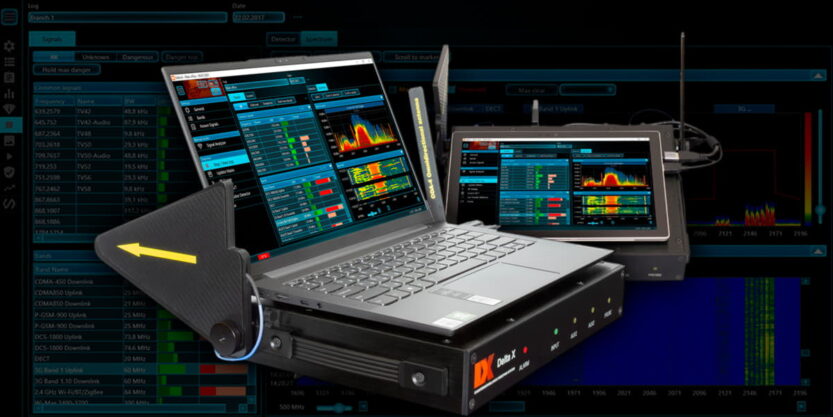GPS trackers (beacons) can be divided into three types:
1. Those that accumulate coordinates and do not transmit them
2. Those that accumulate coordinates and transmit them upon request
3. Those which regularly transmit coordinates
Trackers of the second and third type usually use mobile networks to transmit data. To detect these trackers, the detecting device must be in the moving and maneuvering vehicle and perform detection (measurement of signal’s level) on the mobile bands. It is necessary to monitor the uplink subset of a band only if the band is used in the frequency-division duplexing mode.
Since the allocated bands may differ in different countries, it is important that the detecting device perform scanning on all the bands used inside the country and does not scan not used bands. Incorrect adjustment of the frequency allocation may lead to false positives or in missing the desired signal. The products such as iProtect 1217, Delta X G2/6 or Delta S can be easily adjusted to the local frequency allocation. When changing the country of stay they can be quickly readjusted to the new plan of bands.
Before making a check of a vehicle, make sure that the battery of your device is charged fully. Use a powerbank if available. The Delta X and Delta S systems are powered from the laptop and can work from 1 to 1.5 hours without external power. Keep the laptop connected to AC during 2-3 hours before the search.
It is recommended to carry out the detecting procedure in places with minimal interference from other mobile devices. Urban environments are very saturated with means of mobile communication and make it impossible to correctly interpret the results. Carry out the procedure on an empty road in the countryside, without settlements and other transport.
Disable all RF devices near you – mobile phones, wireless devices, computers, access points. Disable all wireless features existing in the vehicle.
Place your detecting device in the middle of the vehicle.
Use a proper antenna in order to get the desired sensitivity pattern. The directed antenna can provide good results for a longer vehicle such as trucks, while the omni-directed antenna will suit well for normal-sized cars.
Start the corresponding detecting mode in your device. Activate logging if possible. Set the desired thresholds to achieve proper sensitivity.
Start the engine and start driving. Some tracking devices will periodically transmit information about the coordinates of the vehicle, and some also about engine start/stop and change of direction of movement. Drive for at least half an hour, periodically changing direction, stopping and starting the engine. Keep an eye on the alarm graph, level bargraphs and audio alarm at all times.
The detecting device will scan all mobile bands and displays the cumulative level on the histogram. Trackers (beacons) are characterized by short periodic exchanges with the mobile network. The histogram makes it possible not to miss such short-term signals and to catch their periodicity. The presence of signals can inform about a mobile device that is nearby (a GPS tracker is a mobile device).
If a suspicious signal is detected, try to find a connection between its appearance and the behavior of the car – start-stop the engine, start moving, stop, make a turn, etc.
If you see a signal, proceed to physical locating of the transmitter. Changing the position of the detecting device and its direction will allow you to find the location of the transmitter. Rare periodic signals may require more time to study.



